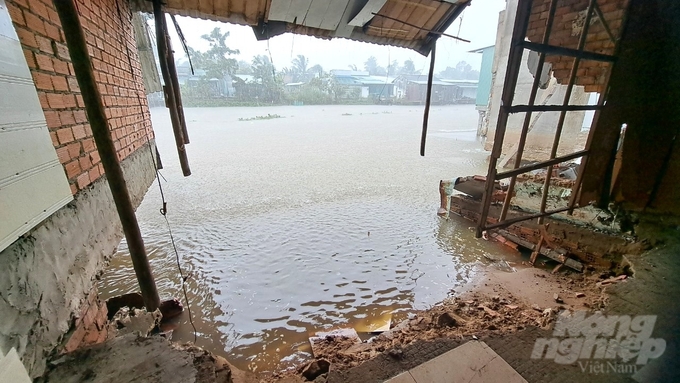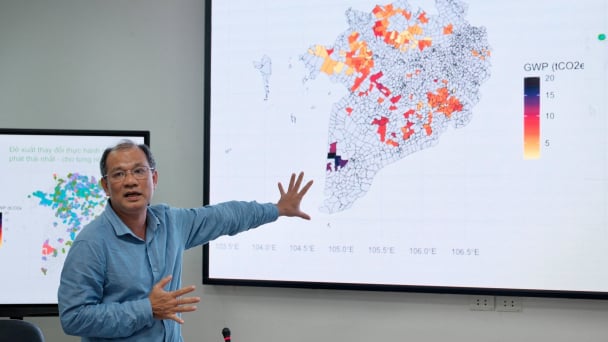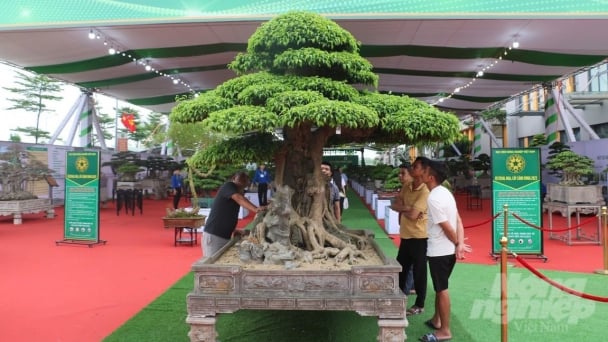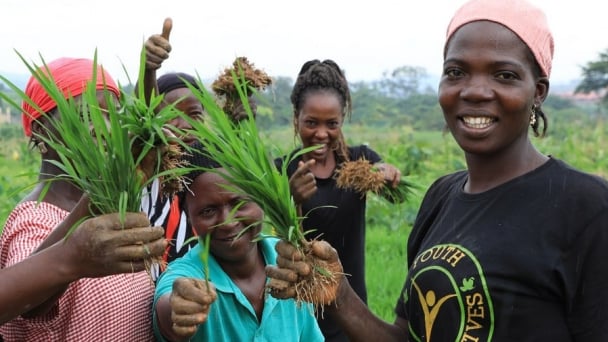May 14, 2025 | 12:28 GMT +7
May 14, 2025 | 12:28 GMT +7
Hotline: 0913.378.918
May 14, 2025 | 12:28 GMT +7
Hotline: 0913.378.918

Since the beginning of 2023, in Hau Giang province, 31 landslides have occurred with a total length of 665m, with an estimated loss of nearly VND 2 billion. Photo: Kim Anh.
Hau Giang province is located in the center of the western region of Hau river. In recent years, riverbank erosion in Hau Giang has become more and more severe, significantly affecting production and people's lives.
According to information from the Standing Office of the Steering Committee for Natural Disaster Prevention and Control, Search and Rescue of Hau Giang Province, since the beginning of 2023 there have been 31 cases of landslide in the province with a total length of 665 m, causing loss of nearly 3,500 m2 of land. The estimated damage was almost VND 2 billion, a high increase compared to the same period in 2022 (June 2022 only recorded 20 landslides).
Especially in May 2023, 14 landslides were recorded in the province. In Chau Thanh district, only on June 5, three consecutive landslides occurred. The length of the landslide was 48 m, and the depth to the shore at the broadest place was 4 - 8 m.
According to the initial assessment from the Steering Committee for Natural Disaster Prevention and Control, Search and Rescue of Chau Thanh district, the cause of the above landslides is due to the influence of the water flow.
Mr. Tran Thanh Toan, Director of Hau Giang Sub-Department of Water Resources, said that in 2023, the impact of natural disasters and landslides would become more and more complicated and severe. Mr. Toan said, "Landslides often occur in places with a lot of boat traffic. Over-exploitation of sand for leveling and construction works is also a pressing matter".
The prevention and control of landslides require the participation of the whole system from the central government, the provincial government, and the companionship of the people. In addition to solutions on mechanisms to support people to move to safe places or build complex structures, a solution that is confident to promote high efficiency in the agricultural sector of Hau Giang province is the implementation of ecological embankments.
Ecological embankment effectively prevents landslides, especially rivers, canals, and canals with main traffic axes, which contributes to reducing the cost of road maintenance and protection, and handling of landslides in the long run without the cost of moving dykes and rural roads. This model ensures convenient waterway and road traffic, contributing to new rural construction and the stability of the local population as well as the construction material supply market.
The environment is protected thanks to the increased planting area covering the water environment. This will create a ground to reinforce the canal roof which facilitates dredging the canal bed because most of the canals have been deposited but there is no construction site.

More than 100km of ecological barriers have been implemented yearly in Hau Giang province for riverbank protection, landslide prevention, and control. Photo: Kim Anh.
"The idea of ecological embankment against landslides comes from the fact that Hau Giang Sub-Department of Water Resources wants to find a solution suitable for natural conditions but promotes the highest efficiency in landslide prevention," Mr. Toan said.
The local people can actually benefit from many values of ecological embankments. They can grow melaleuca, coconut, and leafy vegetables on the environmental barrier. Or, on the road along the ecological wall, flowers can be planted to create landscapes and protect the road.
As for the essential canals, Hau Giang Sub-Department of Water Resources is constructing projects to move the dike inward in order to ensure the safety of people's daily life and production.
Regarding the issue of scattered trees, according to Mr. Toan, the area of land for planting trees is very limited, especially in public places. Therefore, if the combination of scattered tree planting with ecological barriers is effective, this approach will help the scattered tree planting achieve the set goal.
In the coming time, the work of propaganda and mobilization so that people can deeply understand the meaning of ecological embankment and scattered tree planting for life should be promoted. They are contributing to the effective implementation of the Project "Growing a billion trees from 2021 to 2025," according to Decision No. 524/QD-TTg dated April 1, 2021, of the Prime Minister.
In June 2021, the People's Committee of Hau Giang province issued Plan 113/KH-UBND on planting scattered trees and afforestation in the area from 2021 to 2025. To complete the planting phase of 8.4 million scattered trees, including Urban green trees and scattered forestry trees. The provincial Department of Agriculture and Rural Development has proactively sourced seeds, ensuring the plant’s quantity, quality, and standards suitable to local conditions.
Translated by Ha Phuc

(VAN) Data from 10,000 farming households will help professionalize production organization and support the implementation of the One Million Hectares Program for High-Quality, Low-Emission Rice Cultivation.

(VAN) FAO Director-General QU Dongyu marks International Day of Plant Health at NENA conference.

(VAN) Deputy Minister of Agriculture and Environment Hoang Trung affirmed that floriculture and ornamental plants are a growing industry that receives significant global attention.

(VAN) The three staple crops dominating modern diets – corn, rice and wheat – are familiar to Americans. However, fourth place is held by a dark horse: cassava.
/2025/05/10/4037-3-223011_495.jpg)
(VAN) Remote sensing technology is becoming an indispensable tool in monitoring resources, developing modern agriculture, and protecting the environment in Vietnam.

(VAN) The trash bag used on fishing vessels can withstand rough sea conditions, including level 8 to level 10 winds and waves. Notably, it can be hung anywhere on the boat.

(VAN) African leaders launched the Kampala Declaration on Building Resilient and Sustainable Agrifood Systems in Africa, marking a bold step toward transforming the continent's agriculture.